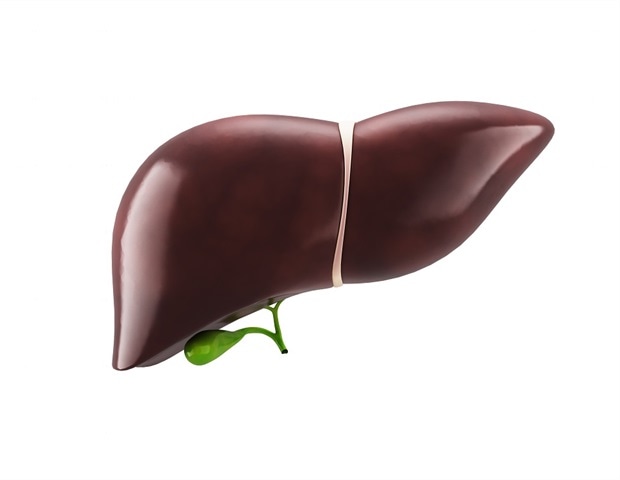
The liver is a crucial organ, essential to digestion, metabolism and the elimination of poisons. It has a novel means, regeneration, which permits it to exchange liver cells broken by the very toxins that these cells get rid of. Nonetheless, the liver stops regenerating in instances of illnesses that contain continual liver injury –similar to cirrhosis–. Such illnesses have gotten more and more prevalent, related to unhealthy dietary habits and alcohol.
Studying to activate liver regeneration is subsequently a precedence at present, to profit primarily sufferers with extreme liver injury and likewise those that have had a part of their liver reduce out to take away a tumor.
Analysis on the Nationwide Most cancers Analysis Centre (CNIO), revealed at present in Nature, has found in animal fashions a beforehand unknown mechanism of liver regeneration. It’s a course of that’s triggered in a short time, only a few minutes after acute liver injury happens, with the amino acid glutamate enjoying a key position.
The authors write in Nature that, in mild of their outcomes, dietary glutamate supplementation can successfully promote liver regeneration and profit sufferers with extreme and continual liver injury, similar to these recovering after hepatectomy, to stimulate liver development, and even these awaiting a transplant.
As defined by Nabil Djouder, head of the CNIO Development Elements, Vitamins and Most cancers Group and senior creator of the examine, “unhealthy food plan and life-style can have an effect on liver regeneration. Our outcomes describe a basic and common mechanism that enables the liver to regenerate after acute injury. These outcomes might also assist enhance liver regenerative capability in sufferers with extreme liver injury, similar to cirrhosis, or those that have undergone partial resection in surgical procedure to take away a tumor.”
The primary creator of the paper is CNIO researcher María del Mar Rigual.
A “advanced and ingenious” perspective on liver regeneration
Liver regeneration was recognized to happen via the proliferation of liver cells, generally known as hepatocytes. Nonetheless, the molecular mechanisms concerned weren’t absolutely understood. This present discovery may be very novel, because it describes communication between two totally different organs, the liver and bone marrow, involving the immune system.
The outcomes present that liver and bone marrow are interconnected by glutamate. After acute liver injury, liver cells, referred to as hepatocytes, produce glutamate and ship it into the bloodstream; via the blood, glutamate reaches the bone marrow, contained in the bones, the place it prompts monocytes, a kind of immune system cell. Monocytes then journey to the liver and alongside the way in which turn out to be macrophages – additionally immune cells. The presence of glutamate reprogrammes the metabolism of macrophages, and these consequently start to secrete a development issue that results in a rise in hepatocyte manufacturing.
In different phrases, a speedy chain of occasions permits glutamate to set off liver regeneration in simply minutes, via adjustments within the macrophage metabolism. It’s, says Djouder, “a brand new, advanced and ingenious perspective on how the liver stimulates its personal regeneration.”
A selected inhabitants of hepatocytes produces glutamate
The analysis additionally clarifies a beforehand unanswered query: how the varied areas of the liver are coordinated throughout regeneration. Within the liver, there are several types of hepatocytes, organised in several areas; the hepatocytes in every space carry out particular metabolic capabilities. The examine now revealed in Nature reveals that hepatocytes producing a protein generally known as glutamine synthetase, which regulates glutamate ranges, play a key position in regeneration.
Based on the CNIO group, when glutamine synthetase is inhibited, there’s extra glutamate in circulation, which accelerates liver regeneration. That is what occurs when the liver suffers acute injury: glutamine synthase exercise decreases, blood glutamate will increase, and from there, the reference to the bone marrow is established, reprogramming macrophages and stimulating hepatocyte proliferation.
Potential therapeutic purposes
The experiments have been carried out in animal fashions, however their outcomes have been examined with bioinformatics instruments, utilizing databases of mouse and human hepatocytes.
Dietary glutamate supplementation could merely be really helpful sooner or later after liver extirpation, and likewise to scale back liver injury attributable to cirrhosis, which is frequent in sufferers with poor food plan or unhealthy life-style or different critical liver illnesses.”
Nabil Djouder, head of the CNIO Development Elements, Vitamins and Most cancers Group and senior creator of the examine
Rigual additionally suggests including one other objective for future analysis: “Exploring additional the opportunity of utilizing glutamate dietary supplements in people who’ve undergone liver resection for tumor elimination.”
Supply:
Journal reference:
Rigual, M.d.M., et al. (2025) Macrophages harness hepatocyte glutamate to spice up liver regeneration. Nature. doi.org/10.1038/s41586-025-08778-6.

